Look upon this face:
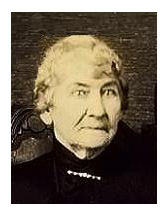 That face may look like the lace-and-lavender face of a grandmother—which she was—but there is also a heap of history to be read in that face. And history to be read in her hands. But more on those hands later.
That face may look like the lace-and-lavender face of a grandmother—which she was—but there is also a heap of history to be read in that face. And history to be read in her hands. But more on those hands later.
She was Josephine H. Ryan, and three connections made her the crossroads where Fort Worth history and Texas history met.
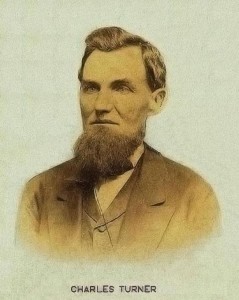 First connection: Josephine H. Ryan was the daughter of Captain Charles Turner. Turner, born in 1822, came to Texas from Alabama about 1840. By 1846 he was married and living on a land grant of 320 acres in Shelby County in east Texas.
First connection: Josephine H. Ryan was the daughter of Captain Charles Turner. Turner, born in 1822, came to Texas from Alabama about 1840. By 1846 he was married and living on a land grant of 320 acres in Shelby County in east Texas.
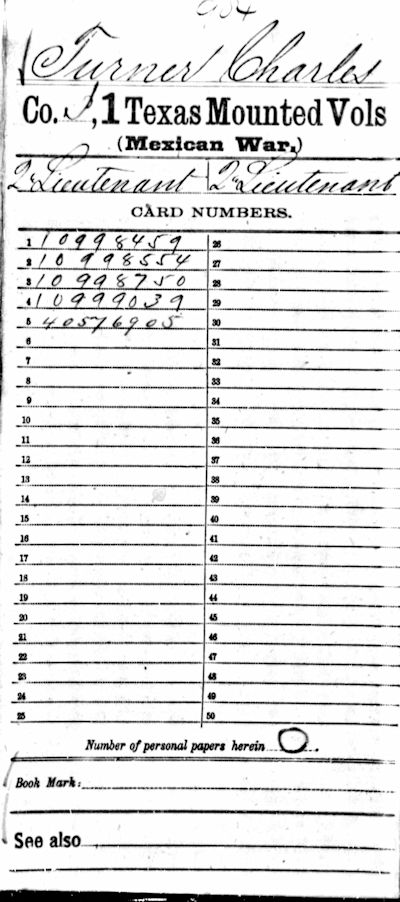 Turner fought in the Mexican-American War of 1846-1848, volunteering in Rusk County. In 1849 he was one of the soldiers who rode with Major Ripley Arnold and Colonel Middleton Tate Johnson when they selected a site on the Trinity River on which the Army would establish Fort Worth.
Turner fought in the Mexican-American War of 1846-1848, volunteering in Rusk County. In 1849 he was one of the soldiers who rode with Major Ripley Arnold and Colonel Middleton Tate Johnson when they selected a site on the Trinity River on which the Army would establish Fort Worth.
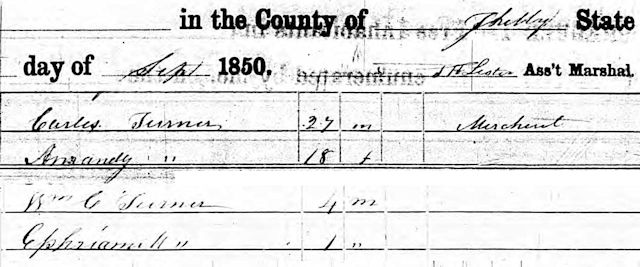 Turner then went back to his home in Shelby County in east Texas, where he and wife Amanda had two young boys by 1850. Daughter Josephine was born in 1851. Soon after, Turner returned to Fort Worth. Where Greenwood Cemetery is today he scratched a farm out of the prairie grass and live oak trees. On Fort Worth’s town square Turner and Captain Ephraim Merrell Daggett also operated one of the town’s first dry goods stores. In 1860, after Cynthia Ann Parker was “freed” from Comanche Chief Peta Nocona’s tribe by Texas Ranger Captain Sul Ross at the Battle of Pease River, she drew crowds at the Turner-Daggett store as her uncle, Isaac Parker, took her to the Parker farm in Birdville.
Turner then went back to his home in Shelby County in east Texas, where he and wife Amanda had two young boys by 1850. Daughter Josephine was born in 1851. Soon after, Turner returned to Fort Worth. Where Greenwood Cemetery is today he scratched a farm out of the prairie grass and live oak trees. On Fort Worth’s town square Turner and Captain Ephraim Merrell Daggett also operated one of the town’s first dry goods stores. In 1860, after Cynthia Ann Parker was “freed” from Comanche Chief Peta Nocona’s tribe by Texas Ranger Captain Sul Ross at the Battle of Pease River, she drew crowds at the Turner-Daggett store as her uncle, Isaac Parker, took her to the Parker farm in Birdville.
Charles Turner prospered in Fort Worth. When the Civil War began, the Confederate government ordered Southerners to exchange their gold for Confederate money. Charles Turner chose not to.
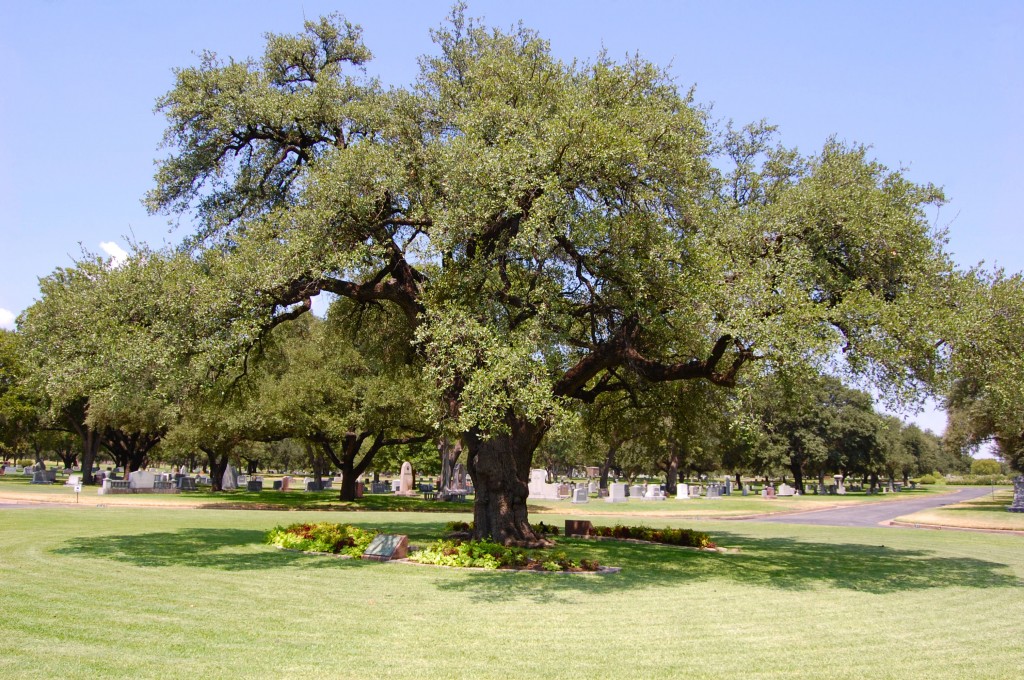 Instead, with the help of a trusted slave, Turner buried thousands of dollars worth of gold under an oak tree that still stands in the cemetery, known as the “Turner Oak.”
Instead, with the help of a trusted slave, Turner buried thousands of dollars worth of gold under an oak tree that still stands in the cemetery, known as the “Turner Oak.”
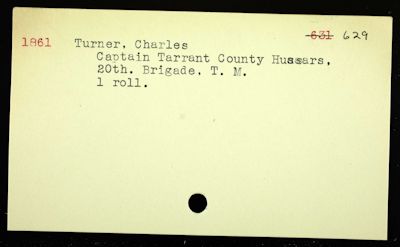 Charles Turner enlisted in the Confederate Army, but a wound from the Mexican-American War forced him to resign his commission as a captain. He returned to Fort Worth, hired a substitute, then organized and outfitted a company of soldiers at his own expense.
Charles Turner enlisted in the Confederate Army, but a wound from the Mexican-American War forced him to resign his commission as a captain. He returned to Fort Worth, hired a substitute, then organized and outfitted a company of soldiers at his own expense.
After the war Turner dug up that gold he had buried under the tree and used the money to help stabilize Fort Worth’s economy and to ease the debt that Fort Worth owed to Northern creditors. Daughter Josephine H. Ryan later wrote: “. . . the firm of Turner and Daggett . . . were indebted in New York for $30,000 worth of goods; the firm paid that sum to the Confederacy and after the war paid off the New York creditors also.”
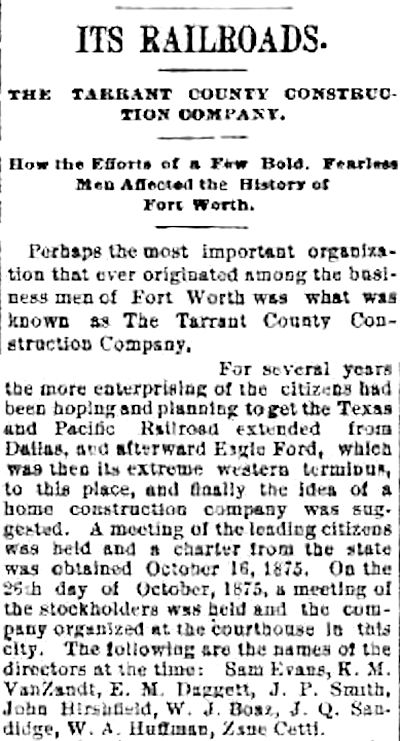 Second connection: Josephine H. Ryan in 1866 married John S. Hirshfield. Hirshfield, born in Germany, was a director—as were Daggett, K. M. Van Zandt, and John Peter Smith—of Tarrant County Construction Company, the consortium that brought the railroad to town in 1876.
Second connection: Josephine H. Ryan in 1866 married John S. Hirshfield. Hirshfield, born in Germany, was a director—as were Daggett, K. M. Van Zandt, and John Peter Smith—of Tarrant County Construction Company, the consortium that brought the railroad to town in 1876.
John S. Hirshfield—with father-in-law Charles Turner—also owned stores of general merchandise along the route of the Houston & Texas Central Railway in Robertson and Limestone counties. The 1870 census lists Hirshfield as a merchant in Limestone County. Charles Turner died in Fort Worth in 1873.
 John Hirshfield died in 1877.
John Hirshfield died in 1877.
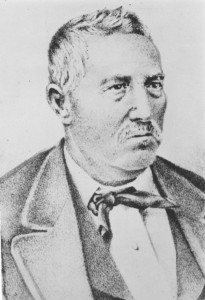 Third connection: Josephine H. Ryan was the step-granddaughter of the aforementioned E. M. Daggett, whom newspaper editor B. B. Paddock, in his multivolume history of Fort Worth, called “the father of Fort Worth.” If you could dust early Fort Worth history for fingerprints, you’d find those of Daggett, Van Zandt, and Smith all over the place. So influential was Canada-born Daggett that when Fort Worth incorporated in 1873, the city council voted to place Daggett’s likeness on the city seal.
Third connection: Josephine H. Ryan was the step-granddaughter of the aforementioned E. M. Daggett, whom newspaper editor B. B. Paddock, in his multivolume history of Fort Worth, called “the father of Fort Worth.” If you could dust early Fort Worth history for fingerprints, you’d find those of Daggett, Van Zandt, and Smith all over the place. So influential was Canada-born Daggett that when Fort Worth incorporated in 1873, the city council voted to place Daggett’s likeness on the city seal.
Like Charles Turner and Middleton Tate Johnson, Daggett came west to Tarrant County from Shelby County. And like Turner and Johnson, Captain Daggett fought in the Mexican-American War, when the United States faced General Santa Anna, just as Texas had in 1836. Captain Daggett commanded a cavalry company in Jack Hays’s regiment. Daggett’s company fought Santa Anna in the Battle of Buena Vista in northern Mexico, then pursued Santa Anna as he retreated. Santa Anna escaped, but Daggett’s men confiscated some of the general’s personal belongings, including a silver wash bowl said to have been made from Mexican silver dollars. Daggett kept the bowl as a souvenir.
Captain J. C. Terrell was another of Fort Worth’s early settlers, having come here in the 1850s from Tennessee by way of the gold fields of California. In 1906 he published a book of frontier memories. “In 1857,” Terrell wrote, “General [Sam] Houston and Hardin R. Runnels were candidates for governor of Texas. . . . General Houston and Lewis T. Wigfall—who spoke in behalf of Runnels—met in discussion at Birdville in this county but passed the night in Fort Worth. Runnels accepted the hospitality of Colonel Nat Terry, while Captain Daggett entertained General Houston. Houston’s wound in the leg, received in the Battle of San Jacinto in 1836, was a running sore and, in fact, never healed. It needed frequent dressing, and Captain Daggett used this Santa Anna silver wash bowl that night and with his own hands dressed the wound. . . .
“Right here in Tarrant County,” Terrell wrote, “Mrs. Josephine Ryan, the step-granddaughter of Captain E. M. Daggett, owns the silver wash basin captured from General Santa Anna.”
 Josephine H. Ryan said of the wash bowl: “. . . my husband, John S. Hirshfield, gave him [Daggett] fifty dollars in gold for it. I still have the historical relic in my possession, and my children and grandchildren have had their first bath in it.”
Josephine H. Ryan said of the wash bowl: “. . . my husband, John S. Hirshfield, gave him [Daggett] fifty dollars in gold for it. I still have the historical relic in my possession, and my children and grandchildren have had their first bath in it.”
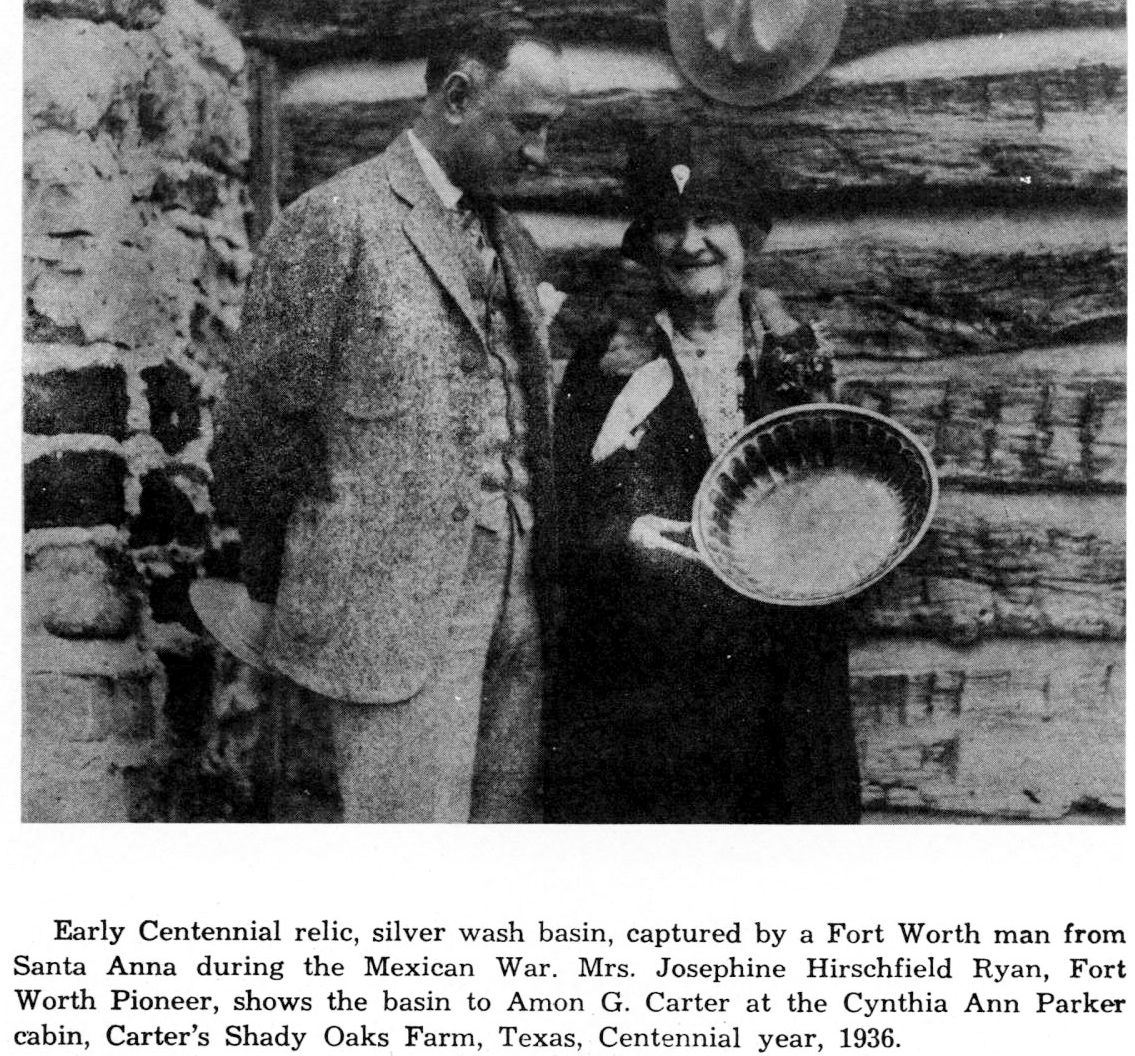 Photo is from Down Historic Trails of Fort Worth and Tarrant County. The Parker cabin is now at Log Cabin Village.
Photo is from Down Historic Trails of Fort Worth and Tarrant County. The Parker cabin is now at Log Cabin Village.
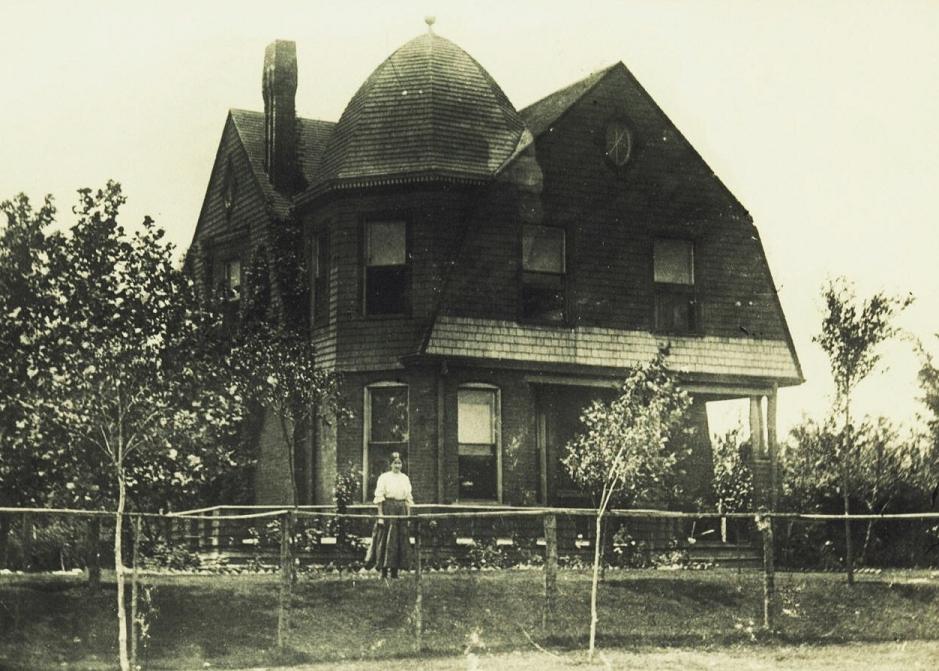 Read again what Mrs. Ryan said about that silver wash bowl: “. . . my children and grandchildren have had their first bath in it.” Think of that! What could be more Texan than having your first bath in Santa Anna’s silver wash bowl (perhaps while cooing “Remember the Alamo!”)? One of those grandchildren who was thus steeped—literally—in Texas history was Page Pleasants, shown here at the Arlington Heights home of Josephine H. Ryan.
Read again what Mrs. Ryan said about that silver wash bowl: “. . . my children and grandchildren have had their first bath in it.” Think of that! What could be more Texan than having your first bath in Santa Anna’s silver wash bowl (perhaps while cooing “Remember the Alamo!”)? One of those grandchildren who was thus steeped—literally—in Texas history was Page Pleasants, shown here at the Arlington Heights home of Josephine H. Ryan.
And what became of Santa Anna’s silver wash bowl? Samantha Lyons Pauley, a descendant of Josephine H. Ryan, told me that possession of the bowl is believed to have passed first to a museum and then to a private collector.
My thanks to Samantha for allowing me to reproduce the photos of her ancestors.
 Josephine H. Ryan, who was the crossroads where Fort Worth history and Texas history met, died April 13, 1931. Clip is from the April 14 Dallas Morning News.
Josephine H. Ryan, who was the crossroads where Fort Worth history and Texas history met, died April 13, 1931. Clip is from the April 14 Dallas Morning News.
 Josephine H. Ryan, Charles Turner, E. M. Daggett, and John Hirshfield are buried in Pioneers Rest Cemetery.
Josephine H. Ryan, Charles Turner, E. M. Daggett, and John Hirshfield are buried in Pioneers Rest Cemetery.
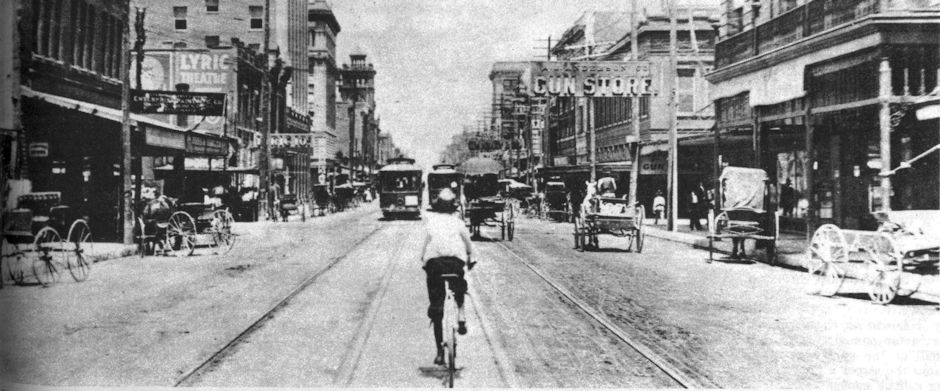





My name is James Campbell and I married Linda Stephens, who is the great great great granddaughter of Ephraim Merle Daggett. My wife’s mother was Helen Daggett, her father was Stanley B. Daggett, son of Harrison Marsh Daggett, son of Ephraim Beck Daggett, son of Ephraim Merle Daggett. I heard my wife’s mother, Helen Daggett speak of Santa Ana’s silver wash basin that E.M. Daggett had many times. No one ever knew what ever happened to it.
so she is a Ryan for whom the Ryan Place addition is named?
Christopher, her last husband was Alvis Parmley Ryan, who was born in Kentucky. John C. Ryan the developer was born in South Carolina, his wife Elizabeth Willing in Mississippi. I do not know of a connection between Alvis and John C., but that does not mean there isn’t one.
I grew up on Turner-Warnell Road in Mansfield. I always wondered what or who it was named for but haven’t ever found any information.
Any Idea?
Robb, it has been my experience that hyphenated road names in rural areas are often named for people who lived at each end connected by the road. Perhaps they donated ROW for the road. Turner-Warnell Road is northwest of Mansfield. An 1895 county map shows George Turner and W. W. Warnell living northwest of Mansfield. Turner lived west of today’s Business 287 (then just a wagon road). Warnell lived east of 287. The two men lived east-west of each other–roughly the direction of Turner-Warnell Road, which crosses 287.
I too am a direct descendant of Charles Turner and Amanda L. Adams Turner, my great-grandparents. As a child I remember my grandmother (Marguerite Bolleter Lanier) telling me the story of the Turner Oak tree and the gold. I was very pleased when I was able to spend the day in Fort Worth, going to see the tree and getting newspaper articles from the Cemetery telling the story of the tree and my Great-grandfather. I also visited Pioneer Rest Cemetery and saw the family graves.
I too have Charles Turner as my great, great grandfather! His daughter, Amanda Levisia Turner Bolleter was my great grandmother.
I so appreciate this article that you’ve put together. Priceless info for me.
Thank you, Renee. The Turners were important figures in Fort Worth history.
Charles Turner was one of my great grandfathers. You ought to look up his father, Robert Turner. He was appointed by Sam Houston to determine where to build the state capital. Also signed Texas Declaration of Ind.
Great story! I was wondering if some of Josephine’s descendants are John Ryan who started Ryan Mortgage in Arlington?
Thanks, Kay. If there is a tie between husband Alvis Ryan and the Ryan Place/mortgage Ryans, I have not seen it, but that does not mean there is not one.
Lovely! I grew up hearing bits and pieces of this as Charles Turner is my gr-gr-gr grandfather, but you’ve put together nicely somethings i hadn’t heard. Are you related?
Ms. Graham: Thank you. No relation. What a life your great-great-great-grandfather lived.
D’Anne!
You’re a great-great-great granddaughter too?!
What branch of the family tree are you from?
Josephine’s daughter, Maybelle Elise Ryan Strupper was my paternal grandmother’s mother.
Hi. My name is Barbara Wiesner Norris. Charles Turner was my gggrandfather and Josephine my great grandmother. Josephine is the reason we have the family history. She saved everything and the trunk the family history was in was passed down to me. We are so fortunate that Josephine was so wise. My m other loved her grandmother!
I read a similar story about Santa Ana’s silver wash basin in the book “Reminiscences of the Early Day’s of Fort Worth” by Captain J.C. Terrell.
Yeah, Terrell suggested that the basin be put on public display in the Carnegie Library. That never happened as far as I know. And, of course, the Carnegie Library AND its successor are now gone as well.